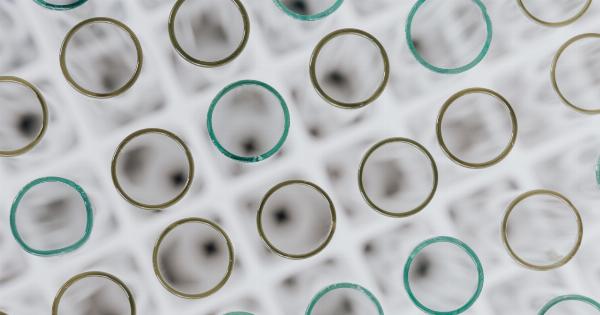Cancer is a dreaded disease, and it can occur anywhere in the human body. In this article, we will discuss the genetic variation that raises the risk of cancer in the salivary glands, which produce saliva and help us digest food.
What are Salivary Glands?
Salivary glands are responsible for producing saliva in the mouth. They can be found in many places around the mouth and throat, and they are essential to the process of digestion.
Saliva contains enzymes that help break down food, making it easier for us to swallow and digest. The salivary glands also help to keep the mouth moist, which aids in speaking and helps to prevent oral infections.
What is Salivary Gland Cancer?
Salivary gland cancer is a rare type of cancer that affects the tissues that make up the salivary glands. There are several different types of salivary gland cancer, and they can vary in severity.
Some types of salivary gland cancer are slow-growing and do not spread quickly, while others are more aggressive. Salivary gland cancer can occur in any of the salivary glands, but it is most commonly found in the parotid gland.
What are the Symptoms of Salivary Gland Cancer?
The symptoms of salivary gland cancer can vary depending on the type and location of the cancer. Some common symptoms include:.
- A lump or swelling in the mouth, usually in the area of the salivary gland
- Pain or numbness in the face, neck, or mouth
- Difficulty swallowing or speaking
- A change in the way the face looks, such as drooping or weakness on one side
- Trouble opening the mouth fully
What Causes Salivary Gland Cancer?
The exact cause of salivary gland cancer is not known, but researchers believe that it may be caused by a combination of genetic and environmental factors.
Certain genetic variations have been linked to an increased risk of salivary gland cancer, and exposure to certain chemicals or radiation may also play a role. However, many cases of salivary gland cancer occur in people with no known risk factors.
Genetic Variations Linked to Salivary Gland Cancer
Research has identified several genetic variations that may increase a person’s risk of developing salivary gland cancer. One of these variations is a mutation in the PIK3CA gene.
This gene provides instructions for making a protein that is involved in cell growth and division. When the PIK3CA gene is mutated, it can cause cells to grow and divide uncontrollably, which can lead to the development of cancer.
Another genetic variation that has been linked to salivary gland cancer is a mutation in the PLAG1 gene.
This gene plays a role in regulating cell growth and division, and when it is mutated, it can cause cells to grow and divide uncontrollably, leading to cancer.
A third genetic variation that has been linked to salivary gland cancer is a mutation in the HMGA2 gene. This gene provides instructions for making a protein that helps regulate cell growth and division.
When the HMGA2 gene is mutated, it can cause cells to grow and divide uncontrollably, leading to cancer.
Diagnosing Salivary Gland Cancer
Salivary gland cancer can be difficult to diagnose because it is rare and the symptoms can be similar to those of other conditions. In order to diagnose salivary gland cancer, doctors may perform a number of tests, including:.
- Physical exam: Your doctor may examine your mouth and neck to check for lumps or other signs of cancer.
- Imaging tests: Your doctor may order X-rays, CT scans, or MRIs to get a closer look at the salivary glands.
- Biopsy: A biopsy involves taking a small sample of tissue from the salivary gland and examining it under a microscope to look for cancer cells.
Treatment for Salivary Gland Cancer
The treatment for salivary gland cancer depends on the type and location of the cancer, as well as the patient’s overall health. Some common treatments include:.
- Surgery: Surgery is often the first-line treatment for salivary gland cancer. The surgery may involve removing the entire salivary gland or just a portion of it.
- Radiation therapy: Radiation therapy involves using high-energy radiation to kill cancer cells. It may be used before or after surgery, or as the primary treatment for some types of salivary gland cancer.
- Chemotherapy: Chemotherapy involves using drugs to kill cancer cells. It may be used in conjunction with surgery or radiation therapy for some types of salivary gland cancer.
Preventing Salivary Gland Cancer
There is no surefire way to prevent salivary gland cancer, but there are some things you can do to reduce your risk:.
- Don’t use tobacco products: Tobacco use has been linked to an increased risk of salivary gland cancer, so avoiding tobacco is an important step in reducing your risk.
- Avoid exposure to radiation: Exposure to high levels of radiation can increase your risk of salivary gland cancer, so it’s important to limit your exposure whenever possible.
- Eat a healthy diet: Eating a diet that is rich in fruits, vegetables, whole grains, and lean proteins may help reduce your risk of cancer.
Conclusion
Salivary gland cancer is a rare but serious type of cancer that can affect anyone. While the exact causes of salivary gland cancer are not known, certain genetic variations have been linked to an increased risk of the disease.
By knowing the risk factors and taking steps to reduce your risk, you can help protect yourself from this deadly disease.































